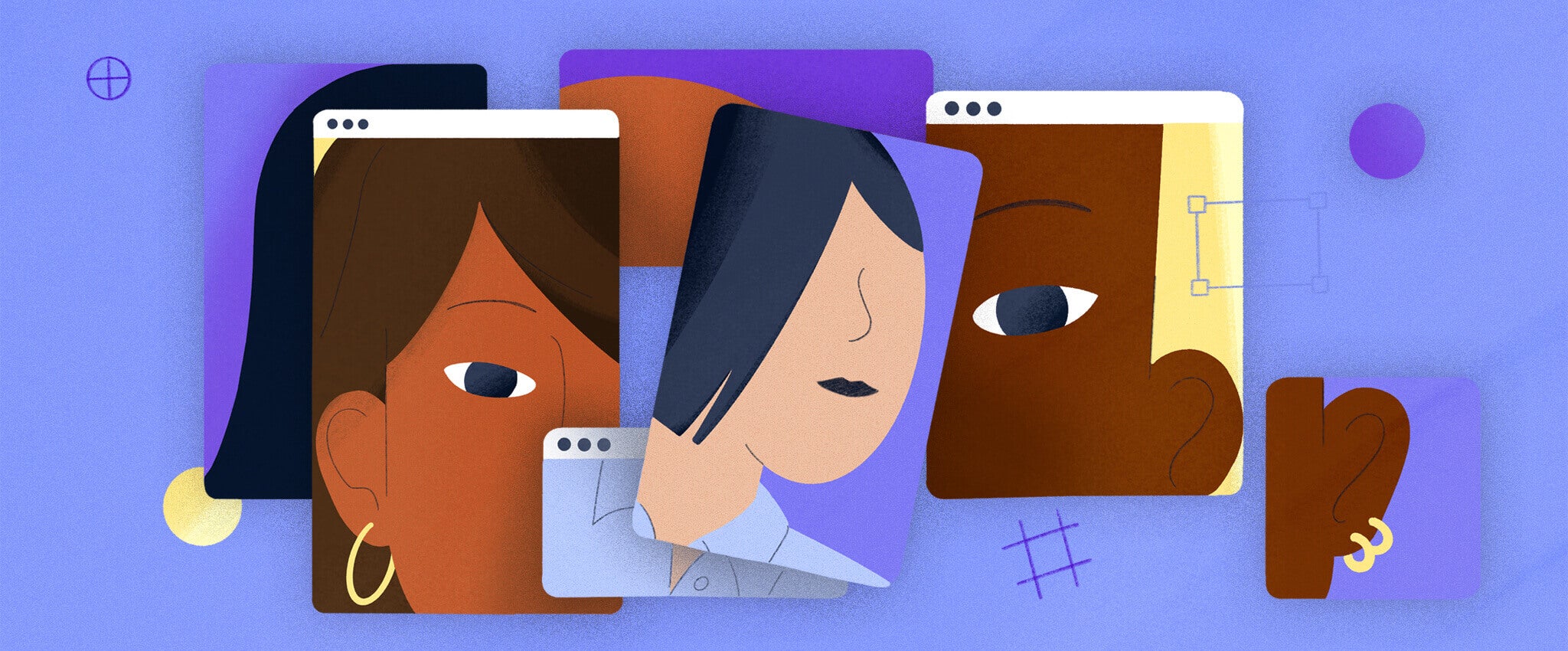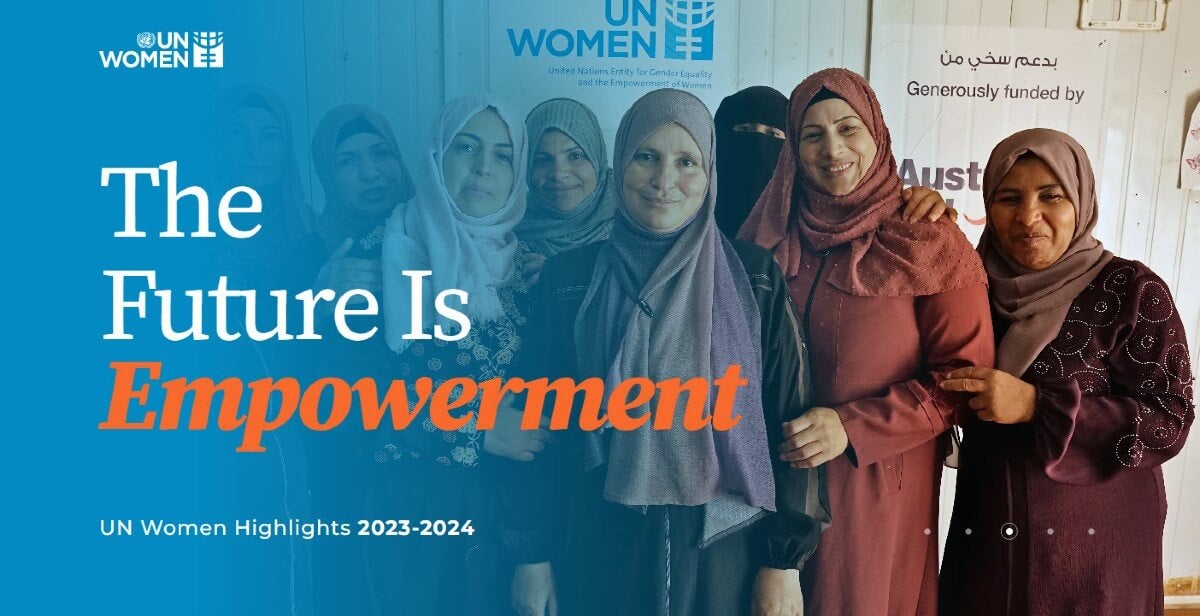FAQs: Digital abuse, trolling, stalking, and other forms of technology-facilitated violence against women

Imagine receiving a message from a stranger that contained chillingly accurate details about your daily routine. Or consider the shock of discovering that your footage has been digitally altered into explicit content and splashed across the internet. These are not hypothetical scenarios of digital abuse — they are a frightening reality for millions of women and girls navigating the digital world today.
As technology mediates more of our daily lives, it is also being weaponized to harm women and girls in new and alarming ways. Although not a new phenomenon, technology-faciliated gender-based violence has surged rapidly in recent years, posing serious threats to the safety and well-being of women and girls everywhere. What starts as online abuse can swiftly spiral into danger that extends beyond screens and borders, making it impossible for many women to feel safe at home, work, or in public spaces.
No one should have to live in fear just for existing online. The digital world should be a safe space for everyone.
Governments and the technology sector must tackle this threat and do more to protect women's rights in the digital era. The 2024 report of the UN Secretary-General identifies three emerging challenges: growing backlash against women’s rights, the rapid rise of artificial intelligence (AI), and the expansion of the manosphere – an ecosystem of misogynistic content that is seeping into mainstream culture, shaping public attitudes towards women, and fueling violence.
What is technology-facilitated gender-based violence?
Technology-facilitated gender-based violence refers to any act that is committed, assisted, aggravated, or amplified by the use of information communication technologies or other digital tools, that results in or is likely to result in physical, sexual, psychological, social, political, or economic harm, or other infringements of rights and freedoms.
While many other terms – such as digital or online violence – are commonly used, “technology-facilitated gender-based violence” better reflects how technology can enable harm, both online and offline.
Take doxing, for example, which is the act of sharing someone’s personal information online. It can lead to real-life consequences such as stalking, threats, and even physical violence. Or consider deepfake abuse, where manipulated images or videos of someone published online can then result in offline reputational damage with lasting and devastating effects on a person’s life. These examples show the complexities of technology-facilitated gender-based violence and how its scope can be harder to define, as harm often permeates both online and offline spaces.
The digital revolution has both exacerbated existing forms of gender-based violence (such as sexual harassment, stalking, hate speech, misinformation, defamation, and impersonation) and created new forms of abuse (such as hacking, astroturfing, video and image-based abuse including deepfakes, doxing, cyberbullying, and online grooming among others).
How many women and girls experience technology-facilitated gender-based violence?
Millions of women and girls are affected by digital abuse and technology facilitated violence every year. Studies suggest that between 16 and 58 per cent of women have experienced this type of violence. Data from different regions confirm that technology-facilitated violence against women happens everywhere:
- Arab States: 60 per cent of women internet users have experienced online violence.
- Eastern Europe and Central Asia: research across 12 countries found that more than 50 per cent of women over 18 years old have experienced some form of technology-facilitated abuse in their lifetime.
- Sub-Saharan Africa: A study of five countries found that 28 per cent of women had experienced online violence.
- Europe and the USA: A survey of women aged 18 – 55 in Denmark, Italy, New Zealand, Poland, Spain, Sweden, the UK and the USA found that 23 per cent of women reported at least one experience of online abuse or harassment.
What are the most common forms of digital abuse and technology-facilitated violence against women?
Sexual harassment and stalking are the most commonly reported forms of technology-facilitated violence experienced by women and girls. Image-based abuse (sharing intimate photos without consent), unwanted messages, social media posts, and phone calls are the most frequently used tactics for sexual harassment. Women may be harassed on digital platforms in comment sections, bombarded with explicit messages, and tracked through GPS and location-based apps, sparking a digital nightmare that often spills into their offline lives.
Other forms of abuse that women and girls face include cyberbullying, hate speech, sexual exploitation, defamation, intimate image-sharing, sextortion, revenge porn.
The tools and platforms perpetrators use to inflict harm on women and girls range from smartphones, computers, chatrooms, social networking sites, online gaming sites, GPS trackers, and video streaming platforms.
Who is most at risk of digital abuse and technology-facilitated violence against women?
While all women and girls may experience digital abuse, online violence, or technology-facilitated gender-based violence, some groups are at greater risk.
- Young women and girls: Given that girls and young women are more likely to use technology for learning, accessing information and connecting to peers, they also face increased exposure to online violence. One global study found that 58 per cent of girls and young women have experienced some form of online harassment.
- Women who face multiple forms of discrimination: Women with disabilities, Black and indigenous women and other women of colour, migrant women, and LGBTIQ+ people all face higher risks of digital violence.
- Women in political and public life: Human rights defenders, activists, journalists and lawmakers face increased rates of violence both online and offline too. A UNESCO study found that 73 percent of women journalists experienced online violence in the course of their work. The Inter-Parliamentary Union found that 58 per cent of African women parliamentarians had experienced online attacks.
How can we stop digital abuse and technology-facilitated violence against women?
- Enhance cooperation between governments, the technology sector, women’s rights organizations, and civil society to strengthen policies to protect women and prevent violence from happening in the first place.
- Address data gaps to improve understanding of the causes of such violence, the profiles of perpetrators, and to inform prevention and response efforts.
- Develop and implement laws and regulations with the input from survivors and women’s organizations.
- Hold the tech industry accountable by establishing transparency and accountability standards on digital violence and the use of data across digital platforms.
- Integrate digital citizenship and ethical use of digital tools into school curricula to foster a culture of respect and empathy both online and in real life. Sensitize young people—especially young men and boys—caregivers, and educators about ethical and responsible online behaviour.
- Empower women and girls to participate and lead in the technology sector, to inform the design and use of safe digital tools and spaces free of violence.
- Transform harmful social norms by promoting positive masculinities and challenging harmful and misogynistic narratives including through harnessing technology and AI.
- Ensure that public and private sector entities prioritize the prevention and elimination of digital violence, through human rights-based design approaches, safety by design, and adequate investments.
What actions is UN Women taking?
UN Women is leading efforts to combat technology-facilitated gender-based violence by pushing for laws to protect women and girls, closing data gaps, adapting support services for survivors, and working with men and boys to challenge gender stereotypes and discrimination.
- Shaping laws and policies: UN Women works closely with governments and international bodies through platforms like the Commission on the Status of Women and the UN General Assembly to establish stronger laws that combat technology-facilitated gender-based violence.Key contributions include supporting and informing frameworks such as the Global Digital Compact, the UNODC Cyber Crime Convention, EU Directive on combating violence against women, and CSW67 Agreed Conclusions.
- Supporting feminist movements: UN Women bridges the gap between gender justice and digital rights activism by amplifying the voices of women’s rights organizations and fem-tech activists, ensuring they have the tools, knowledge, and networks to challenge digital exclusion and push for better protection of women and girls. Initiatives such as the EU-funded ACT programme aims to strengthen the digital security and advocacy capacities of women’s rights movements and human rights defenders.
- Working with men and boys as allies to transform harmful masculinities. This work includes on-going research with Equimundo to better understand the pathways into misogynistic networks online and entry points for shifting harmful narratives and engaging men and boys to foster positive attitudes towards women and girls.
- Raising public awareness: Through campaigns, educational resources, and bystander intervention programmes, UN Women raises public awareness of such violence and promotes prevention strategies.
- Building knowledge and gathering data: UN Women is closing knowledge gaps by defining technology-facilitated gender-based violence , developing standardized methodologies that countries can use to gather data, as required by the Statistical Commission.
- Building partnerships: UN Women collaborates with global initiatives like the Generation Equality Action Coalitions and the Global Partnership for Action on Gender-Based Online Harassment and Abuse. It also supports initiatives like Women LEAD, which advances women’s leadership while addressing barriers to participation in both digital and physical spaces.
Additional resources
- Repository of UN Women’s work on technology-facilitated gender-based violence | Publications | UN Women – Headquarters
- Intensification of efforts to eliminate all forms of violence against women and girls: Technology-facilitated violence against women and girls: Report of the Secretary-General (2024)
- Intensification of efforts to eliminate all forms of violence against women: Report of the Secretary-General (2022)
- Accelerating efforts to tackle online and technology-facilitated violence against women and girls: UN Women policy brief
- Stepping up action to prevent and respond to online and ICT-facilitated violence against women and girls
- Normative frameworks on gender perspectives in technology and innovation
- Online and ICT-facilitated violence against women and girls during COVID-19
- Online violence against women in Asia: A multicountry study
- Violence against women in the online space: Insights from a multi-country study in the Arab States
- Violencia contra mujeres y niñas en el espacio digital: Lo que es virtual también es real






